Movie: “Hidden Figures” — Black women pioneers in the space program.
Katherine Johnson is a legendary NASA physicist and mathematician whose calculations by hand for manned missions (including to the moon) were so accurate astronaut John Glenn requested that she double check NASA’s new computers before his mission to orbit the earth in 1962. In January 2017 Johnson’s story will be featured in the movie “Hidden Figures,” which tells the story of black women who helped NASA win the space race during the Civil Rights era.
The film is based on Margot Lee Shetterly’s book, Hidden Figures, and will star Taraji P. Henson as Johnson. Pharrell Williams will write music for the Ted Melfi-directed film. The book reveals the personal accounts of four women that then-NASA staffers referred to as “the colored computers.”
One of the first African Americans and females to work in what would become NASA, Johnson graduated high school at age 14 and received degrees in French and mathematics in 1932 from West Virginia State University, an HBCU. In 1953, she joined Langley Research Center (LaRC) as a research mathematician for the National Advisory Committee for Aeronautics (NACA) and was assigned to the previously all-male flight research division. She calculated the trajectory for the Apollo 11 mission to the Moon and before that had calculated the trajectory for putting the first American, Alan Shepard, in space in 1959.
In 1962, when NASA used computers for the first time to calculate Glenn’s orbit around Earth, officials called on her to verify the computer’s numbers. Her ability and reputation for accuracy helped to establish confidence in the new technology. Later in her career, she worked on the Space Shuttle program, the Earth Resources Satellite, and on plans for a mission to Mars. For more on Johnson, click here.
1971 Pittsburgh Pirates: First all-Black/Latino MLB starting nine
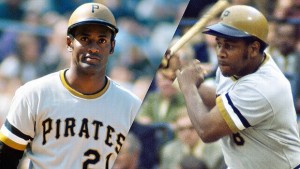
Roberto Clemente and Willie Stargell
From Sportsblog: As baseball prepares to celebrate Jackie Robinson breaking the color barrier on April, 15, 1947, it is also a good time to take note of another historic event that occurred in 1971.
When the Pittsburgh Pirates took the field for a game against the San Diego Padres on Sept. 1, 1971, it may have, at first glance, seemed just like a regular game.
In fact, it wasn’t until about the second inning when the Pirates’ second baseman Dave Cash, chuckling, told Al Oliver, who was playing first base, “Man, we got all brothers out here.”
It was the first time in the history of Major League Baseball that a team started all nine black, and Latino, players. It occurred 24 years after Jackie Robinson broke the MLB color barrier in 1947. (more)
More baseball history: Moses Fleetwood Walker, played pro baseball several decades before Jackie Robinson
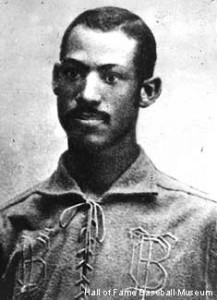 Moses Fleetwood Walker — not Jackie Robinson — was the first African-American to play in the Major Leagues. In 1884, Walker broke through the invisible barrier that had stopped black men from playing “Organized Baseball,” and he achieved this historic first more than a half century before Jackie Robinson reached the Major Leagues. Born at a way station along the Underground Railroad in 1857, Walker was a catcher for the professional Toledo Blue Stockings who played in the American Association. Several AA teams, including Cincinnati, Brooklyn, and St. Louis, joined the National League when the AA folded in 1891. Read about it here.
Moses Fleetwood Walker — not Jackie Robinson — was the first African-American to play in the Major Leagues. In 1884, Walker broke through the invisible barrier that had stopped black men from playing “Organized Baseball,” and he achieved this historic first more than a half century before Jackie Robinson reached the Major Leagues. Born at a way station along the Underground Railroad in 1857, Walker was a catcher for the professional Toledo Blue Stockings who played in the American Association. Several AA teams, including Cincinnati, Brooklyn, and St. Louis, joined the National League when the AA folded in 1891. Read about it here.
TIPHC Bookshelf
 Published scholarship on black history in Texas is growing and we’d like to share with you some suggested readings, both current and past, from some of the preeminent history scholars in Texas and beyond. We invite you to take a look at our bookshelf page — including a featured selection — and check back as the list grows. A different selection will be featured each week. We welcome suggestions and reviews. This week, in honor of his birthday, we offer, “Walls That Speak, The Murals of John Thomas Biggers,” by Olive Jensen Theisen.
Published scholarship on black history in Texas is growing and we’d like to share with you some suggested readings, both current and past, from some of the preeminent history scholars in Texas and beyond. We invite you to take a look at our bookshelf page — including a featured selection — and check back as the list grows. A different selection will be featured each week. We welcome suggestions and reviews. This week, in honor of his birthday, we offer, “Walls That Speak, The Murals of John Thomas Biggers,” by Olive Jensen Theisen.
John Thomas Biggers (1924–2001) was one of the most significant African American artists of the twentieth century. He was known for his murals, but also for his drawings, paintings, and lithographs, and was honored by a major traveling retrospective exhibition from 1995 to 1997. He created archetypal imagery that spoke positively to the rich and varied ethnic heritage of African Americans, long before the Civil Rights era drew attention to their African cultural roots. His influence upon other artists was profound, both for the power of his art and as professor and elder statesman to younger generations.
Olive Jensen Theisen’s long-time commitment to the art of John Biggers resulted from the serendipitous discovery of an early Biggers mural in a school storeroom in the mid-1980s. Theisen immediately recognized the artist, the work, and its significance. She then set about returning The History of Negro Education in Morris County, Texas to a place of honor and found herself becoming a friend and recorder of John Biggers’s stories and experiences relating to the creation of his other murals too, including Family Unity at Texas Southern University.
Containing more than eighty color and black-and-white illustrations, Walls That Speak is a richly illustrated update of an earlier edition published in 1996. The artist completed new murals between its publication and his death in 2001. In addition to the inclusion of the new murals, Theisen has added a chapter on Biggers’s African art collection. The only work exclusively dedicated to his murals, this book will appeal to all those interested in murals or African American art.
This Week In Texas Black History, Apr. 10-16
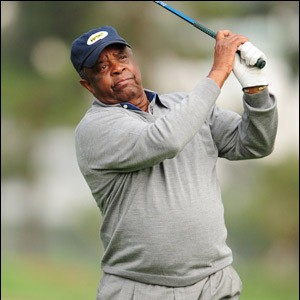 10 – Golfer Lee Elder, a Dallas native, became the first African-American to play in the Masters Tournament on this day in 1975. Leading to the tournament, Elder endured hate mail that said he would never make it to Augusta and that he should “watch your step when you get to Augusta,” and that “there will be blood.” Undaunted, Elder competed in the tournament, but missed the cut after shooting 152 (8-over par) for the first two rounds.
10 – Golfer Lee Elder, a Dallas native, became the first African-American to play in the Masters Tournament on this day in 1975. Leading to the tournament, Elder endured hate mail that said he would never make it to Augusta and that he should “watch your step when you get to Augusta,” and that “there will be blood.” Undaunted, Elder competed in the tournament, but missed the cut after shooting 152 (8-over par) for the first two rounds.
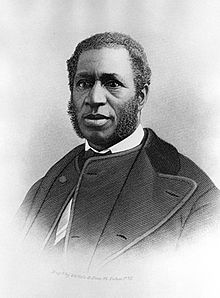 12 – Richard Harvey Cain was born on this day in 1825 in Virginia to free parents. Cain was a political and civic leader of the Charleston, South Carolina reconstruction era. In 1848, he joined the African Methodist Episcopal Church and was a minister in Muscatine, Iowa. He became a bishop of the church in 1880 and was assigned to the Louisiana and Texas district. That same year, he helped found Paul Quinn College in Waco, serving as the school’s president until 1884.
12 – Richard Harvey Cain was born on this day in 1825 in Virginia to free parents. Cain was a political and civic leader of the Charleston, South Carolina reconstruction era. In 1848, he joined the African Methodist Episcopal Church and was a minister in Muscatine, Iowa. He became a bishop of the church in 1880 and was assigned to the Louisiana and Texas district. That same year, he helped found Paul Quinn College in Waco, serving as the school’s president until 1884.
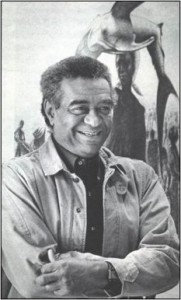 13 — On this date in 1924, internationally acclaimed artist, sculptor, teacher and philosopher John Biggers was born in Gastonia, North Carolina. After studying at Hampston Institute and Penn State University, Biggers moved to Houston in 1949 and became founding chairman of the art department at Texas Southern University, then called Texas State University for Negroes. He held the position for 34 years during which he initiated a mural program for art majors in which every senior student was expected to complete a mural on campus: there are now 114 such murals on the Texas Southern campus. In 1957, with the help of a grant from UNESCO (United Nations Educational, Scientific and Cultural Organization), Biggers was one of the first American black artists to visit Africa to study African traditions and culture.
13 — On this date in 1924, internationally acclaimed artist, sculptor, teacher and philosopher John Biggers was born in Gastonia, North Carolina. After studying at Hampston Institute and Penn State University, Biggers moved to Houston in 1949 and became founding chairman of the art department at Texas Southern University, then called Texas State University for Negroes. He held the position for 34 years during which he initiated a mural program for art majors in which every senior student was expected to complete a mural on campus: there are now 114 such murals on the Texas Southern campus. In 1957, with the help of a grant from UNESCO (United Nations Educational, Scientific and Cultural Organization), Biggers was one of the first American black artists to visit Africa to study African traditions and culture.
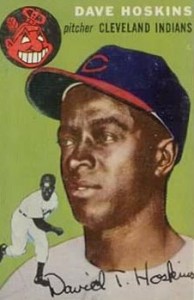 13 – On this day in 1952 David Hoskins started for the Dallas Eagles making him the first black player in the Class AA Texas League. The Eagles were affiliated with the Cleveland Indians. Hoskins was born in Greenwood, Mississippi, on August 3, 1925 but moved to Flint, Mich. with his family in 1936. He played for the Homestead Grays in the Negro American League and in 1948 broke a color barrier as an outfielder with Grand Rapids of the Central League. With the Eagles, Hoskins was an immediate draw and by the season’s end had pitched before sellout crowds at every stadium in the league and led the league in wins (22), complete games (26), innings pitched (280), and had an ERA of 2.12. He also hit .328 and was an all-star selection. He was inducted into the Texas League Hall of Fame in 2004. In 1953, Hoskins was signed by the Indians and played for two seasons, 1953-54. For his Major League career, Hoskins was 9-4 with a 3.81 ERA and .227 batting average.
13 – On this day in 1952 David Hoskins started for the Dallas Eagles making him the first black player in the Class AA Texas League. The Eagles were affiliated with the Cleveland Indians. Hoskins was born in Greenwood, Mississippi, on August 3, 1925 but moved to Flint, Mich. with his family in 1936. He played for the Homestead Grays in the Negro American League and in 1948 broke a color barrier as an outfielder with Grand Rapids of the Central League. With the Eagles, Hoskins was an immediate draw and by the season’s end had pitched before sellout crowds at every stadium in the league and led the league in wins (22), complete games (26), innings pitched (280), and had an ERA of 2.12. He also hit .328 and was an all-star selection. He was inducted into the Texas League Hall of Fame in 2004. In 1953, Hoskins was signed by the Indians and played for two seasons, 1953-54. For his Major League career, Hoskins was 9-4 with a 3.81 ERA and .227 batting average.
 14 – On this day in 1935, Julius “Jay” Parker, Jr. was born in New Braunfels. Parker attended Prairie View A&M University where he completed the Reserve Officers Training Corps curriculum in 1955. Parker rose to the rank of major general and became the highest ranking African-American Military Intelligence Officer in the history of the U.S. Army. He is also a direct descendant of Quanah Parker, the last chief of the Comanche nation.
14 – On this day in 1935, Julius “Jay” Parker, Jr. was born in New Braunfels. Parker attended Prairie View A&M University where he completed the Reserve Officers Training Corps curriculum in 1955. Parker rose to the rank of major general and became the highest ranking African-American Military Intelligence Officer in the history of the U.S. Army. He is also a direct descendant of Quanah Parker, the last chief of the Comanche nation.
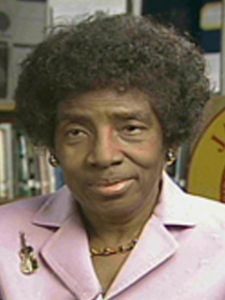 14 – Born in Houston on this day in 1938, Gloria Dean Randle Scott became the first African-American president of the Girl Scouts of America. A civic and educational leader, she took the post in 1975. Scott graduated from Jack Yates High School and received post graduate degrees, including education, from Indiana University. She had been a Junior Girl Scout at and later served as President of the Negro Girl Scout Senior Planning Board. In 1987, she was selected as president of Bennett College, in Greensboro, North Carolina. In 2001, she returned to Texas and was very active in the Corpus Christi community, including the Black Chamber of Commerce.
14 – Born in Houston on this day in 1938, Gloria Dean Randle Scott became the first African-American president of the Girl Scouts of America. A civic and educational leader, she took the post in 1975. Scott graduated from Jack Yates High School and received post graduate degrees, including education, from Indiana University. She had been a Junior Girl Scout at and later served as President of the Negro Girl Scout Senior Planning Board. In 1987, she was selected as president of Bennett College, in Greensboro, North Carolina. In 2001, she returned to Texas and was very active in the Corpus Christi community, including the Black Chamber of Commerce.
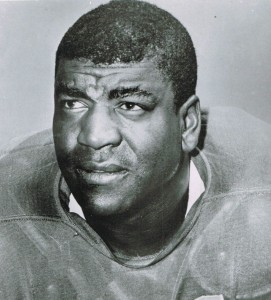 16 – National Football League defensive back Dick “Night Train” Lane was born in Austin on this day in 1928. After serving in the Army during World War II and the Korean War, Lane was signed as a free agent in 1952 with the Los Angeles Rams, though he’d only played at Austin Anderson High School and Scottsbluff (Neb.) Junior College. During his 13-year career, Lane was known as ferocious, intimidating hitter and was responsible for the banishment of the clothesline tackle. Lane’s 14 interceptions in 1952 still stands as an NFL record for rookies. In 1969, just four years after his retirement, he was voted the best cornerback in the first 50 years of the NFL, and in 1974 was inducted to the Pro Football Hall of Fame. In 2001, he was inducted into the Texas Sports Hall of Fame.
16 – National Football League defensive back Dick “Night Train” Lane was born in Austin on this day in 1928. After serving in the Army during World War II and the Korean War, Lane was signed as a free agent in 1952 with the Los Angeles Rams, though he’d only played at Austin Anderson High School and Scottsbluff (Neb.) Junior College. During his 13-year career, Lane was known as ferocious, intimidating hitter and was responsible for the banishment of the clothesline tackle. Lane’s 14 interceptions in 1952 still stands as an NFL record for rookies. In 1969, just four years after his retirement, he was voted the best cornerback in the first 50 years of the NFL, and in 1974 was inducted to the Pro Football Hall of Fame. In 2001, he was inducted into the Texas Sports Hall of Fame.
Blog: Ron Goodwin, author, PVAMU history professor
Ron Good  win’s bi-weekly blog appears exclusively for TIPHC/TBHPP. Goodwin is a San Antonio native and Air Force veteran. Generally, his column will address contemporary issues in the black community and how they relate to black history. He and the TIPHC/TBHPP staff welcome your comments. His latest blog is, “Return of the Silent Majority.” Read it here.
win’s bi-weekly blog appears exclusively for TIPHC/TBHPP. Goodwin is a San Antonio native and Air Force veteran. Generally, his column will address contemporary issues in the black community and how they relate to black history. He and the TIPHC/TBHPP staff welcome your comments. His latest blog is, “Return of the Silent Majority.” Read it here.
Submissions Wanted
Historians, scholars, students, lend us your…writings. Help us produce the most comprehensive documentation ever undertaken for the African American experience in Texas. We encourage you to contribute items about people, places, events, issues, politics/legislation, sports, entertainment, religion, etc., as general entries or essays. Our documentation is wide-ranging and diverse, and you may research and write about the subject of your interest or, to start, please consult our list of suggested biographical entries and see submission guidelines. However, all topics must be approved by TIPHC/TBHPP editors before beginning your research/writing.
We welcome your questions or comments via email or telephone – mdhurd@pvamu.edu, ![]() 936-261-9836.
936-261-9836.
